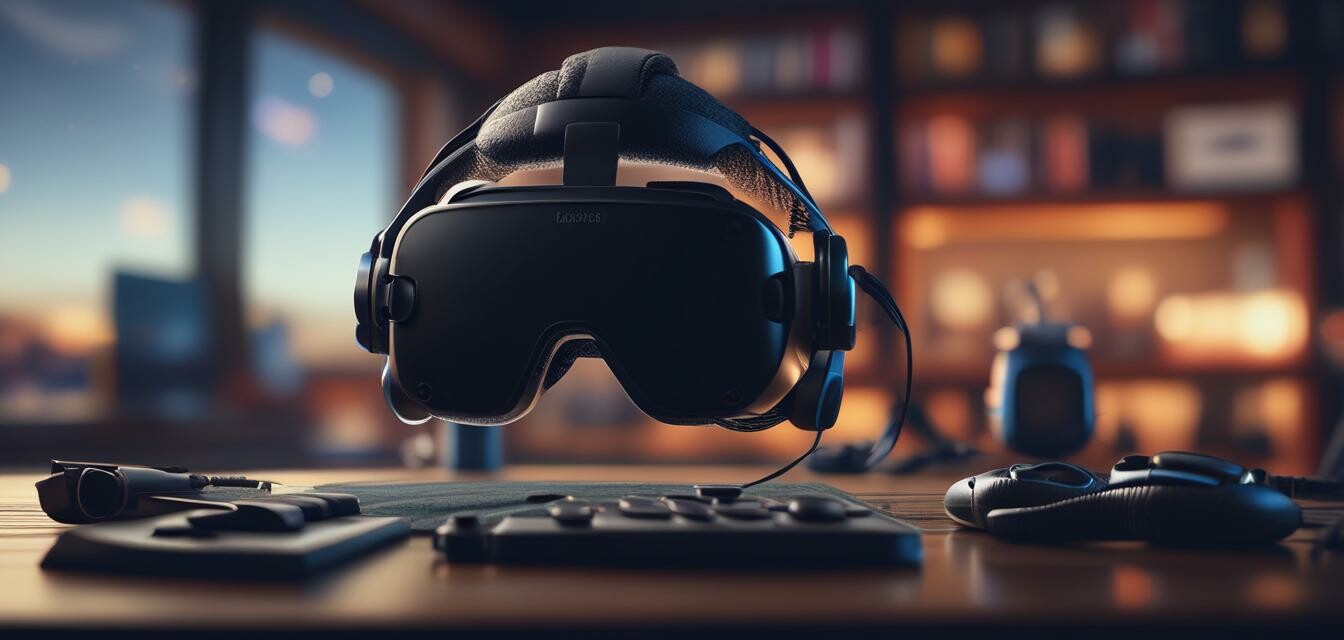
The Future of Mixed Reality in Gaming Accessories
Key Takeaways
- Mixed reality (MR) is revolutionizing how gamers interact with their accessories.
- Innovations in sensory technology enhance immersion and gameplay.
- The future of gaming accessories will increasingly integrate MR elements.
- Staying updated with trends in trends and innovations is essential for gamers.
- MR accessories are designed to provide a more engaging and interactive gaming experience.
As technology continues to advance, so too does the landscape of gaming accessories. One of the most exciting trends in gaming right now is the emergence of mixed reality (MR). This innovative blend of augmented reality (AR) and virtual reality (VR) is creating new opportunities for gamers to enhance their experiences significantly. In this article, we will investigate how mixed reality is shaping the future of gaming accessories and enhancing player experiences.
What is mixed reality?
Mixed reality refers to the merging of the real world and virtual elements, allowing users to interact with both environments seamlessly. This combination offers players a unique and immersive experience that is unlike anything seen before in gaming. By utilizing MR technology, developers can create more interactive and engaging environments, giving players the ability to experience games in new dimensions.
How mixed reality enhances gaming
As we delve deeper into the world of mixed reality, it's crucial to understand the benefits it brings to gaming accessories. Here are some key enhancements:
- Immersive gameplay: MR grips players’ attention by blending real and virtual environments, providing an unmatched sense of presence.
- Enhanced interaction: Mixed reality accessories allow for more natural interactions, such as using hand gestures or voice commands to control gameplay.
- Social engagement: MR can promote social interactions by allowing players to connect in shared virtual spaces.
- Personalized experiences: With MR accessories, games can adapt to individual player preferences and styles, creating a unique gaming experience.
Trends in mixed reality gaming accessories
The rise of MR technology has led to some exciting trends in gaming accessories. Let's take a closer look at these developments:
| MR Accessories | Description | Example Features |
|---|---|---|
| Smart Glasses | Wearable glasses that overlay digital information onto the real world. | Heads-up displays, interactive elements. |
| Motion Controllers | Controllers that track the movement and gestures of the player. | Gesture recognition, haptic feedback. |
| Gaming Gloves | Wearable devices that track the motion of hands and fingers. | Realistic feedback, precise control. |
| VR Headsets with MR Capabilities | Headsets that combine traditional VR with real-world input. | Dynamic environment mapping, immersive audio. |
Consumer adoption of MR technology
As VR and AR technologies evolve, consumers are becoming increasingly receptive to MR gaming accessories. Here are some factors driving this adoption:
- Affordability: As technology advances, the costs of MR accessories are going down, making them accessible to a broader audience.
- Robust content library: Developers are launching innovative games catered specifically for MR environments.
- Enhanced experiences: Gamers are looking for accessories that provide them with more immersive and interactive experiences.
Impacts on the gaming industry
The integration of mixed reality into gaming accessories is causing transformational shifts across the entire gaming industry. Significant impacts include:
- Change in gaming design: Games are being designed with MR capabilities as a core feature.
- Growth in user engagement: The more immersive experience offered by MR increases user engagement levels.
- Shift in market trends: Developers and manufacturers are investing resources to create MR-focused technology, leading to a competitive market landscape.
Challenges in adopting mixed reality
While the future looks promising for mixed reality in gaming accessories, challenges remain. Some of these include:
Pros
- Enhanced player interaction and immersion.
- New gaming experiences and possibilities.
- Increased engagement and community interaction.
Cons
- High initial investment costs for consumers.
- Need for robust technical infrastructure.
- Potential for motion sickness in some players.
The future of gaming accessories
As we move forward, the convergence of MR technology in gaming accessories will continue to grow, leading to even more exciting developments. The player experience will be prioritized, pushing manufacturers to create accessories that align with user needs and desires:
- Merging real and virtual worlds will become more seamless.
- Sensors and interfacing options will become more sophisticated.
- Greater personalization and adaptability in accessories are likely.
Staying informed and prepared
As gaming enthusiasts, it’s vital to keep abreast of the latest trends and innovations in the industry. For a deeper dive into the evolving landscape of gaming accessories, check our articles on buying guides and industry news. Being informed will help you maximize your interactive gaming experiences and understand what gaming accessories come next.